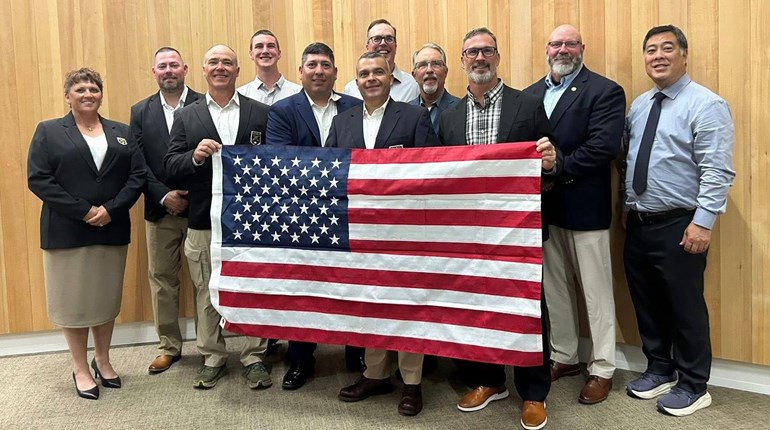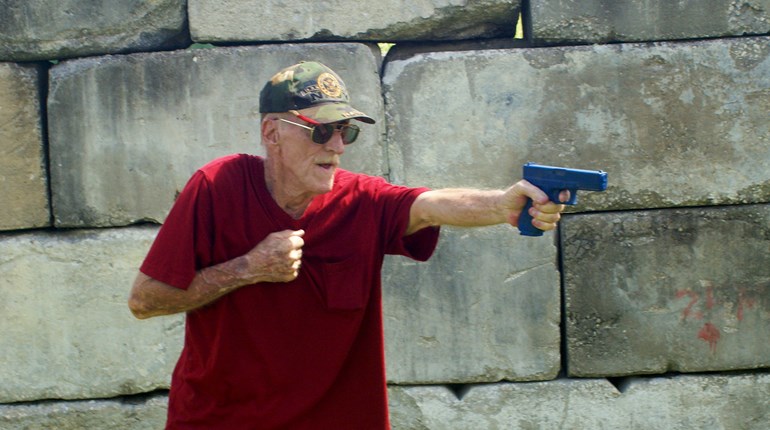
Former battle rifles used in CMP Vintage Military Rifle (VMR) games are infamous for triggers unsuited to precision shooting. While we may be able to lighten some of these triggers, there are others we can’t or shouldn’t, whether for safety reasons or to not violate the spirit (and rules) for “as-issued” VMR competition.
Many factors can affect a rifle’s precision (accuracy), and when we compete with “as-issued” battle rifles, we gain a real appreciation for what goes into our match-grade guns. When we shoulder and fire a vintage military rifle, we find stocks we strain to conform to, left-sided sling mountings that cause a list to port when we sling-in, and coarse sight adjustments exacerbated by a lack of rear sight adjustments and triggers that run the gamut from, “Could be better” to “No wonder they lost the war.”

Two-Stage—and Heavy
Most military triggers, with some rare exceptions, are of the two-stage type. That is, pulling the trigger at first offers no resistance and then it feels as though the trigger stops against sudden resistance. That “no resistance” portion is the first stage. In this first stage, the shooter is merely taking up slack deliberately designed into the trigger system as a safety measure. Continuing to pull the trigger through that sudden resistance and into the second stage trips the sear and releases the firing pin or striker. When you visualize an infantryman’s daily job, including rough handling and dealing with gear, straps, loose clothing and all manner of transportation while carrying (or dropping) a loaded rifle, you can see why designing slack into a trigger that may get bumped or entangled is a good idea.
The trigger’s second stage is where we run into a problem with shooting vintage military rifles in competition—it is routinely too heavy for precision target shooting. We may also have to pull through a long, bumpy and sometimes “gritty” second stage before the rifle fires, and often the release point is not consistent or doesn’t feel so. It can be especially aggravating when shooting offhand and the trigger won’t break cleanly or with consistent feel.

Have you ever fired a Model 1895 Steyr straight-pull bolt-action carbine? If so, you know why we never see these guns at VMR matches. Among other reasons, the triggers are spongy and heavy. The trigger pull on mine is far too high to measure on a spring-type trigger pull gauge. You’d have to go to a gym to find enough weights to trip the M95 Steyr trigger, and there doesn’t appear to be a way of lightening it without modifying springs or other parts. Most vintage military rifles have triggers that are not too difficult to lighten, but do CMP VMR competition rules permit it?
Don’t Ask, Don’t Tell
While CMP rules don’t specifically permit modifying or lightening triggers, they do state trigger pull weight can be no lighter than 3.5 pounds on bolt guns and 4.5 pounds on semi-automatics. One can argue that this is a “don’t ask, don’t tell” invitation to lighten “as-issued” triggers, especially as CMP rules permit other modifications to VMR rifles while still considering them to be “as-issued.” In the end, the only official examination is when an official weighs your trigger before a CMP sanctioned match, verifying the pull weight and that the trigger is, indeed, two-stage.

Stoning the trigger, sear and other engagement surfaces is the usual practice for smoothing (and somewhat lightening) triggers and is keeping within the spirit of VMR competition when we consider the other modifications CMP permits, but the rulebook does not specifically permit modifying springs or replacing fire-control group parts.
“Careful Fitting” vs. Modification
The procedure for lightening triggers is individual to each model of rifle. Some are simple and well-known. Others, not so much. The No. 4 Lee-Enfield, for example, should not have a trigger-pull weight lightened to less than 5 pounds, regardless of CMP’s 3.5-pound rule. According to E.G.B. Reynolds in NRA’s British Enfield Rifles, doing so may cause the rifle to fire when taking up the first stage. Model 98 Mauser and some other triggers, on the other hand, can be improved by lightly polishing the sear-cocking piece engagement surfaces, a practice legal under CMP’s “careful fitting of original parts” rule. Removing a coil from a sear spring can lighten pull weight, but is arguably a modification and not “careful fitting,” as is installing aftermarket springs to lighten trigger pull. But the CMP Rules Committee, of course, has the final say; if in doubt about a rule or intended modification, submit your question to CMP.

There’s plenty of how-to information available, including YouTube videos, describing the methods of smoothening and lightening the triggers of various vintage military rifles. However, before you start, know that those engagement surfaces mentioned above typically have facing angles that are critical to proper and safe operation. Changing them even slightly by stoning, at times, may render some triggers unsafe. While many trigger jobs are not beyond the ability of the home hobbyist with decent mechanical aptitude along with the right information and tools, consider leaving trigger work to the professional. Smoothing and lightening triggers arguably constitutes modifying a safety device, and if you do it incorrectly, you may endanger others—and expose yourself to legal liability in case of accident.
Game Spirit
The founding principle of VMR competition is to offer a low-cost alternative to formal competitions like NRA High Power in order to attract a new, larger audience of civilian shooters into marksmanship training who may then go on to formal competition. Certainly, a bit of tuning will make vintage military rifles more competitive, but every modification that CMP permits is another step on the slippery slope of turning VMR competition into another arms race, so it’s necessary to carefully limit them. While unpermitted modifications may go undetected, they violate the spirit of the VMR game and of competition. Every shot fired from such a rifle is basically stealing from other competitors.
Shooting the highest score at any cost isn’t what the VMR games are about anyway; they are about getting out to the range to participate in civilian marksmanship. Adapting to our rifles challenges our skills and puts the focus on our ability, and we act out a kind of living history when we compete with our old battle rifles. Pretty good reasons to shoot ‘em “as-issued.”
Read more: Lithgow SMLE Mk III Question


































